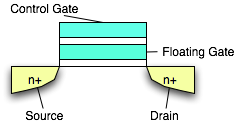Author Archive
Excel Quick Tip Tutorial on Calculating Standard Deviations
Posted by: Jordan in Narrow Focus on April 13th, 2009
Standard Deviation: The usual variation from a mean (~average) in a group of numbers. The average variation from the average.
If you’re thinking there should be a simple way to calculate the standard deviation of a column in excel you’re right there is! The formula is:
=STDEV(A1,A2)
or generically:
=STDEV(cell range)
Here are some examples of how STDEV() can be used:
How to Merge Text Into One Cell
Posted by: Jordan in Narrow Focus on March 30th, 2009
Combining two or more strings and values into one cell by gluing them together is know as concatenation. In Excel concatenation can be express in two ways:
=CONCATENATE(A1,A2)
OR
=A1&A2
Where the arguments can be upto 30 cells and / or custom strings enclosed by quotes.
Here are some examples of how it can be used:
How to Calculate Totals Using SUM() in Excel
Posted by: Jordan in Narrow Focus on March 29th, 2009
Totaling the values within a group of cells, columns, or rows is done using the SUM() function. It looks like this:
=SUM(A1,A2)
Here are some examples of how it can be used:
Understanding the New Microsoft Office Ribbon
Posted by: Jordan in Makes Sense, Video Guide on March 28th, 2009

Youtube has just lunched a new section on their website dedicated to learning! Existing Youtube videos from colleges and universities as well as other generally educational videos are being indexed here. This is an easy way to find many great tutorials, including the one shared below that can help demystify the new look of Microsoft Office 2007. Read the rest of this entry »
How to Find an Average in Excel
Posted by: Jordan in Narrow Focus on March 27th, 2009
Finding an average of a group of cells in Excel is done using the AVERAGE() function. It looks like this:
=AVERAGE(A1,A2)
Here are some examples of how it can be used:
Gadget Shopping: Largest USB Flash Drive You Can / Should Buy (Charts)
Flash drives are an excellent example of the geometric progression of technology. They are also an excellent example of price increasing geometrically vs. capacity. Some models of USB flash drive have dropped in value to the point of impulse purchase, but how much storage should you spend your money on?
The following charts are based on a comparison of 30 USB flash drives
How to Calculate the Difference Between Two Date in Excel
Posted by: Jordan in Narrow Focus on March 26th, 2009
Guide to Simple Date Operations in Microsoft Excel
Calculate the number of days between two dates
Calculate the number of work days between two dates
Calculate the number of months between two dates
Calculate the number of months between two dates in different years
Calculate the number of years between two dates
Why don’t my results look right and end in the year 1900?
How Does NAND Flash Memory Work?
Posted by: Jordan in Makes Sense on January 30th, 2009

NAND Flash Memory (left), Microcontroller (right).
How many times have you been caught off guard by what should be a relatively simple question? “My new flash drive has an insane capacity! How does NAND work anyways?”, I was asked by a friend yesterday. So I blacked out and when I came to I remembered ending my reply with “and ya, I think something like that”. No, it wasn’t that bad but clearly I needed to brush up on the old NAND-cabulary.
How NAND flash Works
On a NAND chip each bit (0 or 1, on or off) is stored physically by a specially designed transistor called a floating gate. The floating gate is electrically isolated from all other components by a layer of oxide. Electrically isolating the floating gate gives NAND flash the most important property that we know and love: data retention without power! (This is also known as non-volatile storage because voltage isn’t required for the memory to maintain its state.)
 When the state of the floating gate needs to be changed it’s time for some physics. Fowler-Nordeim tunneling is the name of the black box of physics that creates an electrical tunnel from a control gate to the floating gate. Via this tunnel the contents of the floating gate (0 or 1) can be read and altered. In your USB drive, Solid State Drive, iPod, or whatever all this work of reading and writing is handled by a separate microcontroller.
When the state of the floating gate needs to be changed it’s time for some physics. Fowler-Nordeim tunneling is the name of the black box of physics that creates an electrical tunnel from a control gate to the floating gate. Via this tunnel the contents of the floating gate (0 or 1) can be read and altered. In your USB drive, Solid State Drive, iPod, or whatever all this work of reading and writing is handled by a separate microcontroller.
What Does NAND Mean?
NAND is not an abbreviation or an acronym. It’s a portmanteau created by combining the word “NOT” with “AND”.
N(OT) + AND = NAND
If you’re thinking this looks like a boolean test you’re right. The result of a NAND test is always true unless both inputs are true.
The Only Free Font Resources You’ll Ever Need

A great new stumble has just increased my list of free online font resources by 100%
Cheat Sheets for PHP
Posted by: Jordan in Time Saving References on January 30th, 2009
When editing on the web it’s always nice to have a few good references on hand. Every new project has a unique blend of markup and scripting, remembering all that syntax isn’t always easy. Add some of these references to your documents folder to refresh your memory whenever you need it.